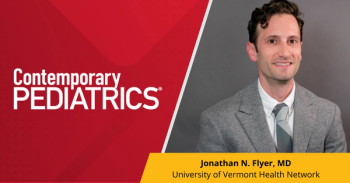
- Consultant for Pediatricians Vol 4 No 5
- Volume 4
- Issue 5
Photoclinic: Herpes Simplex Virus Infection
For 3 days, a 10-year-old girl had redness and vesicles on her right volar wrist. She had not had any pain, fever, or other systemic symptoms.
For 3 days, a 10-year-old girl had redness and vesicles on her right volar wrist. She had not had any pain, fever, or other systemic symptoms.
When she was 2 years old, she had a "scrape" and an infection that involved the right wrist. When she was 4 years old, she had an infection that began in the same location and progressed up her arm. At that time, she was hospitalized and treated with intravenous antibiotics. Her parents were told that if the infection was not controlled, "the arm may have to be removed."' After 2 weeks, she slowly improved and was discharged. There was no history of trauma at age 4 years or now. Her father had a history of labial cold sores, but he did not remember having a sore when his daughter had the initial infection.
Fernando Catalina, MD, of Leominster, Mass, noted several blisters at the base of the thenar eminence and an erythematous streak that extended up the forearm. The wrist was not tender but was warm to the touch. The patient had a well-healed scar over the radial artery--the site of the initial abrasion (at age 2 years).
One of the vesicles was unroofed, and a tissue scraping was sent for herpes culture. The child was given oral acyclovir pending culture results. The redness progressed for the first day of treatment, then stabilized and slowly resolved. The culture report identified a cytopathic pathogen consistent with herpes simplex virus (HSV). The patient completed a 10-day course of oral acyclovir and had complete resolution of her symptoms.
HSV-1, HSV-2, Cytomegalovirus, varicella-zoster virus, Epstein-Barr virus, and human herpesviruses 6 and 7 are common causes of infection in children. HSV can persist throughout the life of the host and can cause recurrent infections. We propose that when this patient had had her original injury, a well-meaning caregiver "kissed it to make it better" and infected her with HSV-1. Although her father is noted to have recurrent cold sores, most adults are HSV-1- seropositive; thus, it is unknown who may have infected her. Because the second infection did not respond to antibiotic therapy and resulted in a prolonged hospitalization, it is possible that this infection was also HSV and was incorrectly treated with antibiotics. Her third infection resolved with antiviral therapy.
Articles in this issue
over 20 years ago
Aniridiaover 20 years ago
Pediatric Urology Clinics: Dysuria in an Elementary School-Aged Boyover 20 years ago
Spitz Nevus and Granuloma Annulareover 20 years ago
Photoclinic: Winged Scapulaover 20 years ago
Photo Essay: Childhood Alopeciaover 20 years ago
"Club" Drugs 101over 20 years ago
Asthma Update: Pearls You May Have Missedover 20 years ago
Case In Point: Toxic Shock Syndromeover 20 years ago
Duodenal Atresia in a Neonateover 20 years ago
Recurrent Strep Throat: How Best to TreatNewsletter
Access practical, evidence-based guidance to support better care for our youngest patients. Join our email list for the latest clinical updates.









